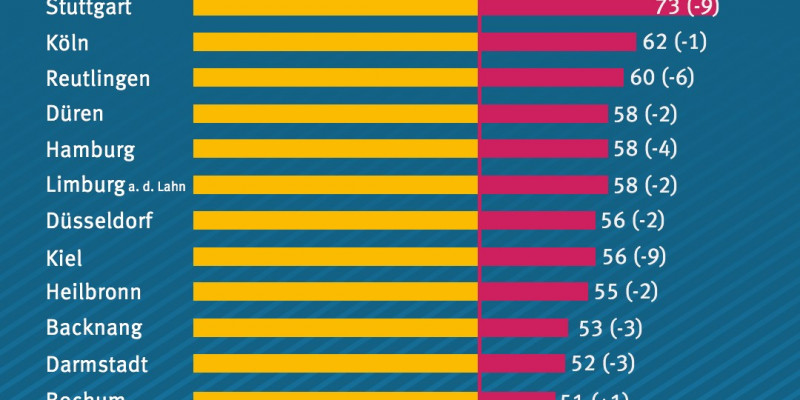"Development is going in the right direction but we are still far from reaching our aim. Many cities are still exceeding the limit value which has been in effect since 2010, thus exposing many residents to large amounts of harmful nitrogen dioxide. Diesel-run vehicles in particular with high levels of real emissions are to blame, many of which were registered only recently and are on city roads", said UBA's President Maria Krautzberger. "Just as the German Environment Agency had assessed in summer 2017, the measures decided at the Diesel Summit such as software updates and trade-in bonuses will not improve the air in cities enough to ensure compliance with limit values everywhere. There is an urgent need for hardware retrofitting of cars and light commercial vehicles. It is the only way to quickly and lastingly reduce the health risks posed by nitrogen dioxide."
UBA sees the roughly two-microgram per cubic metre (annual mean value) decrease in 2017 of average nitrogen dioxide pollution (measured near traffic) as an indication that the urban measures implemented as a result of the diesel debate are starting to show effects. These measures include the introduction of speed limits in some cities and narrowing roads to reduce traffic, increased funding for public means of transport, and retrofitting of buses. At national level, NOx emissions improved slightly as a result of software updates in cars with high real emissions. In addition, the vehicle fleet showed a shift to more new cars but fewer are diesel-run. The figures from the Federal Motor Transport Authority (Kraftfahrbundesamt) on new registrations in 2017 suggest an overall shift to petrol-powered passenger cars, with an 11-percent share increase compared to 2016. The share of diesel-run cars went down by more than 15 percent.
However, the current data does not enable an accurate assessment of the effect of the individual measures on air quality. Data on NO2 and its decline do confirm that software updates and the repurchase of old diesel cars (trade-in bonus) have only limited mitigation potential. According to UBA calculations, the two measures are able to reduce NO2 air pollution by no more than two to five micrograms per cubic metre of air. Another important detail is that both measures have only begun to show effect since late 2017.
"Air quality 2017" is the UBA's evaluation of air quality in Germany and is based on preliminary data which takes into account nitrogen dioxide as well as particulate matter and ozone.
Particulate matter (PM10): In 2017, particulate matter pollution was lower than in the period 2005–2016. With the exception of a period early in the year, weather conditions which favour PM10 pollution did not occur, making 2017 and the two previous years among the lowest in terms of PM10 pollution. The legal limit was only exceeded at the “Am Neckartor” air monitoring station in Stuttgart, with 45 daily values of over 50 μg/m³ – only 35 such days are permitted. This target value was exceeded at 87% of all the measuring stations in Germany. For the sake of human health, UBA believes the WHO recommendation should be applicable. Greater efforts at federal, Land and municipal level are needed to further mitigate the health risks associated with particulate matter exposure. Future action must focus on non-combustible particulate emissions due to abrasion from vehicle brake discs, clutches, and tyres.
Ozone: Ozone concentrations in 2017 were lower than in the last 20 years. Unlike the hot temperatures in 2015 the summer of 2017 was changeable without any significant periods of fair weather which might have favoured the formation of ozone. Nevertheless, 17 percent of all measuring stations recorded exceedences of target values (the maximum 8-hour value for ozone on a given day may not exceed 120 µg/m3 on more than 25 days per calendar year, based on a 3-year average).
 Click to enlarge
Click to enlarge





